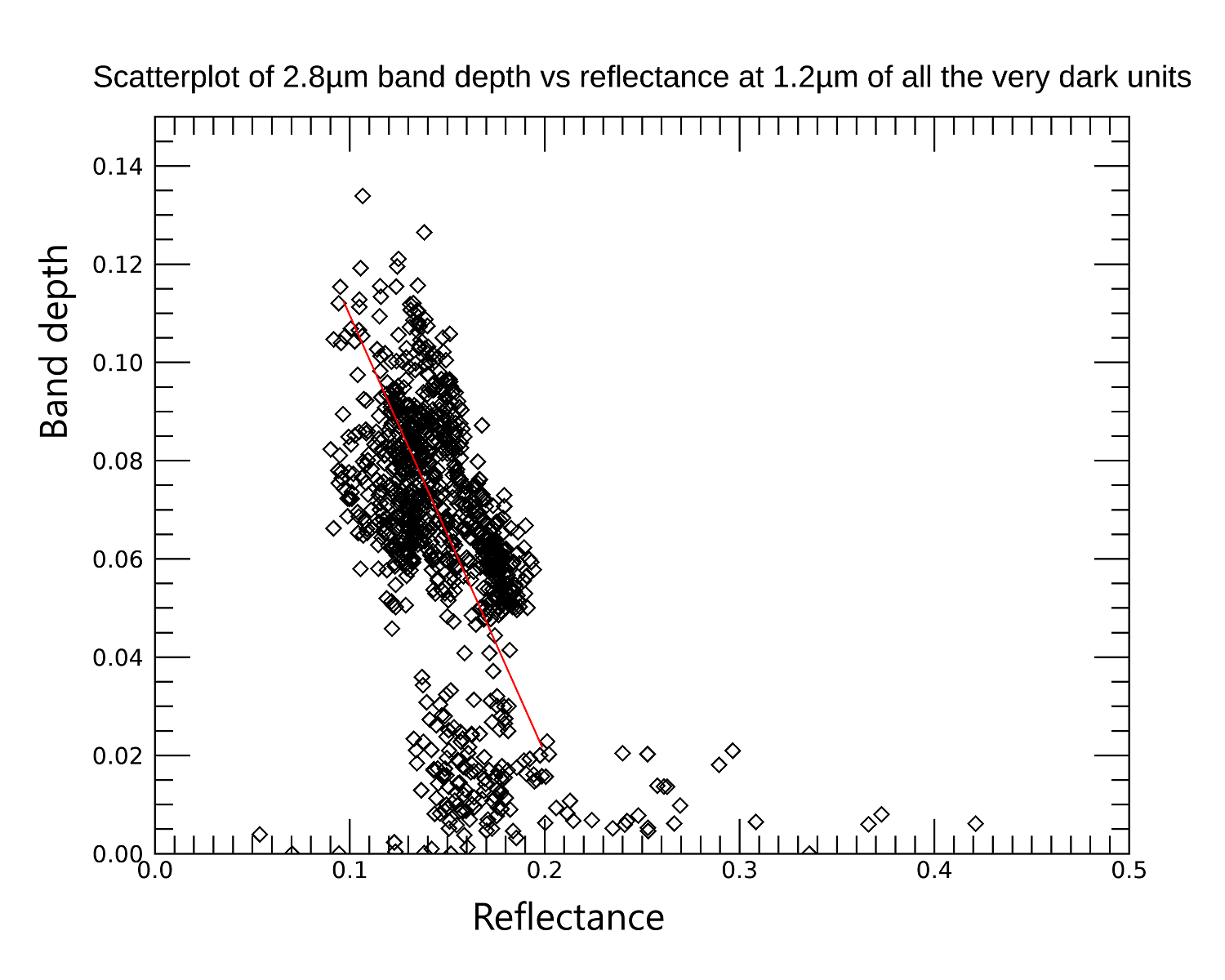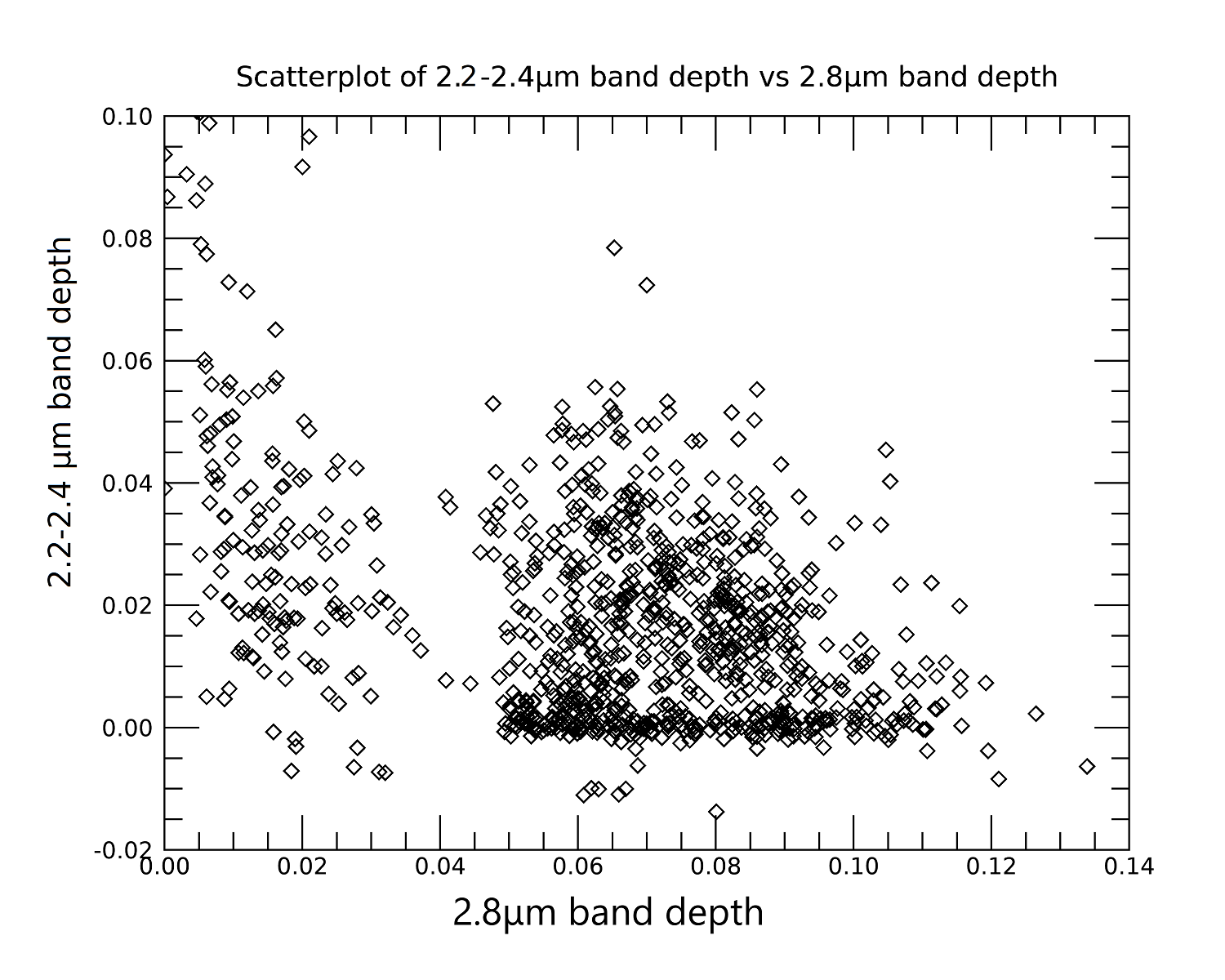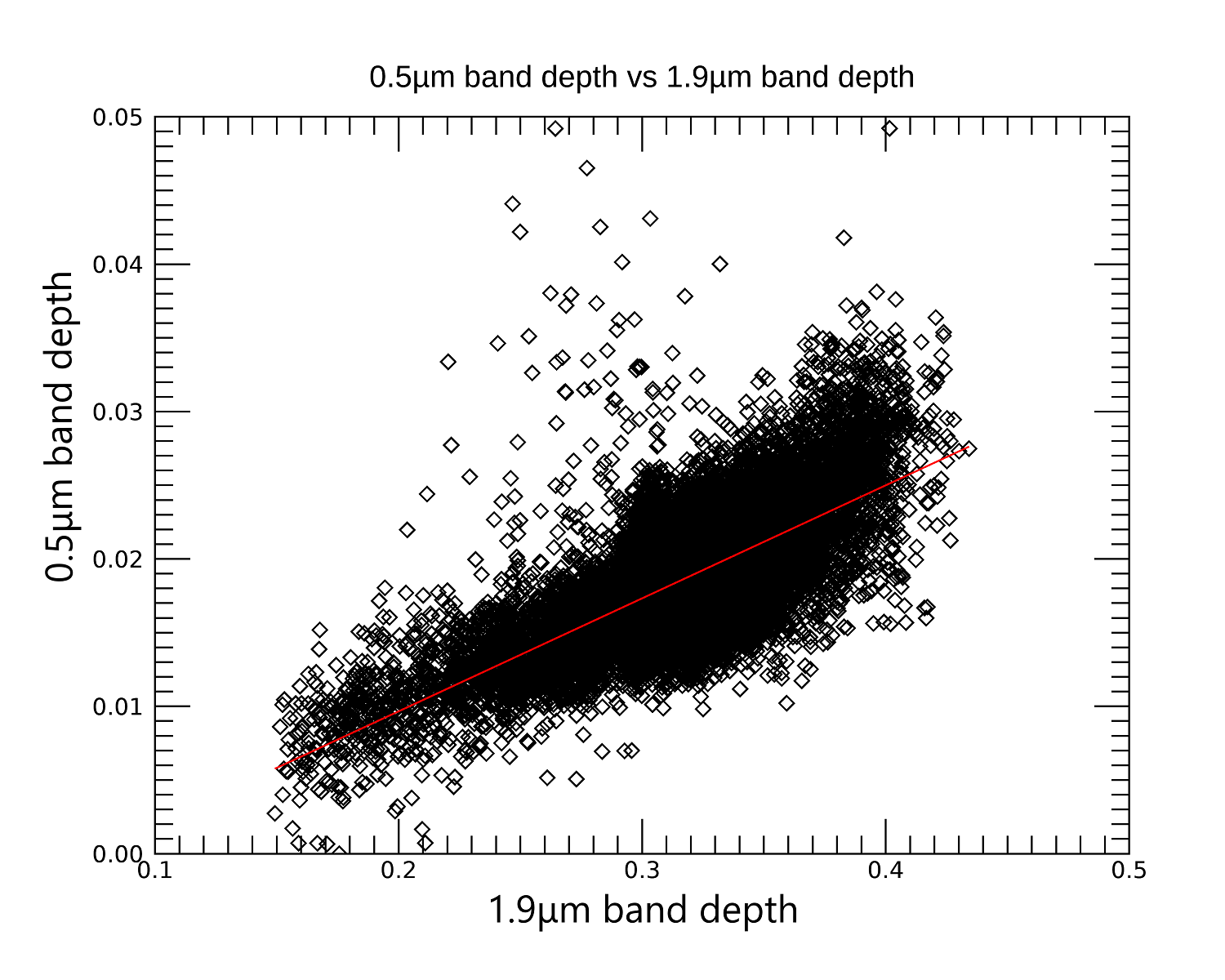Vesta surface composition as derived from newly calibrated Dawn data.
- 1University of Rome "Sapienza", Italy
- 2INAF-IAPS, Italy
Introduction: The 4 Vesta asteroid is a differentiated asteroid, i.e. it has experienced melting and its structure is distinct layered: crust, mantle, nucleus. Hence, study of materials from different depths of Vesta would be helpful to understand its evolutionary history. Moreover, Vesta preserves information on the composition of primordial smaller asteroids that impacted on its surface. Vesta bright surface shows indeed dark units [1], that are supposed to be linked to exogenous material, and are therefore useful to understand the initial stages of the Solar System.
The VIR spectrometer on board the NASA’s Dawn spacecraft [2], that orbited Vesta for approximately one year, collected thousands of hyperspectral images of its surface. Vesta spectra show the 2.7-2.8 μm absorption band, due to the presence of the OH molecule, whose distribution is inversely correlated with the reflectance of its surface [3]. In fact, it is included in carbonaceous chondrites, that are the darkening agents of the Vesta’s dark units [4].
Scientific Objectives: In this work we took advantage of the newly calibrated data of the VIR spectrometer, which are characterized by a better signal to noise (S/N) ratio, giving us the opportunity to search for spectral features that were never seen before, due to noise. Basing on this, the goals of this work were to: 1) confirm, reinforce and characterize the OH distribution on Vesta by studying the 2.7-2.8 µm band and by looking for OH combination bands that occur around 2.2-2.4 µm; 2) search for and characterize possible carbonates, that are supposed to be included in carbonaceous chondrites, i.e., the darkening agents of Vesta; 3) characterize the Vesta surface in the visible range.
OH absorption band: The analysis on absorption bands related to the hydroxyl evidenced an anticorrelation between the abundance of hydroxyl and the reflectance of the surface (Figure 1). This confirms that the OH molecule is linked to the presence of the dark units on Vesta [3]. This is also a definitive proof that dark hydrated impactors (likely carbonaceous chondrites) are the darkening agents on Vesta, ruling out other interpretations suggested in literature (regolith grain size, impact shock and presence of opaque-rich eucrites and metals) [1].

Figure 1: Anti-correlation between the 2.8 µm band depth and the reflectance of the surface.
We searched for the presence of possible combination bands centered around 2.2-2.4 µm. Weak features at 2.4 µm were found but no correlation with the 2.8 µm absorption band has been proved, so we can say that this feature is not related to the OH molecule and is likely a spectral artifact (Figure 2).

Figure 2: This scatterplot shows that the 2.4 µm feature is not correlated to the 2.8 µm absorption band.
Search for carbonates: We were not able to identify the 3.9 µm and the 3.4 µm absorption bands related to the presence of carbonates. This does not necessarily mean that carbonates are absent, but their abundance is not sufficient to observe an absorption band emerging from spectral noise. We compared VIR spectra with synthetic spectra of Vesta analogous mixtures (developed by applying a radiative transfer model) to calculate the upper limit of the abundance of carbonates on Vesta. The results show that carbonaceous chondrites that impacted on Vesta, contain no more than 0.5-2% of carbonates, in agreement with petrochemical analyses of typical Carbonaceous chondrites [5].
Caracterization in the visible range: The visible spectra showed an absorption band around 0.5 µm in addition to the strongest well known pyroxenes absorption band centered at 0.9 µm. We made a scatterplot between the 0.5 µm band depth and the 1.9 µm band depth related to the pyroxenes (Figure 3). In the scatterplot a linear dependance between the two features is evident. This proves that the 0.5 µm absorption band is due to the presence of the pyroxenes. Other features found in the visible range were instead associated to spectral artifacts. This emphasizes the results found by [6].

Figure 3: Correlation between the absorption band at 0.5 µm and the absorption band of the pyroxenes at 1.9 µm.
References:
[1] Palomba E. et al. (2014) Icarus, 240, 58–72.
[2] De Sanctis M. C. et al. (2011) SSR, 163, 329.
[3] De Sanctis M. C. et al. (2012) The astrophysical Journal Letters., 758.2, p. L36.
[4] McCord T. B. et al. (2012) Nature, 491.7422 , 83-86.
[5] de Leuw S., Rubin A. E., Wasson, J. T. (2010) Meteoritics & Planetary Science, 45.4, 513-530.
[6] Rousseau B. e al. (2021) Astronomy and Astrophysics, 653.
How to cite: Massa, G., Longobardo, A., Palomba, E., Angrisani, M., Gisellu, C., Dirri, F., De Sanctis, M. C., Raponi, A., Carrozzo, G., and Ciarniello, M.: Vesta surface composition as derived from newly calibrated Dawn data., Europlanet Science Congress 2022, Granada, Spain, 18–23 Sep 2022, EPSC2022-554, https://doi.org/10.5194/epsc2022-554, 2022.

